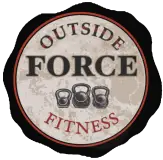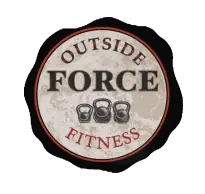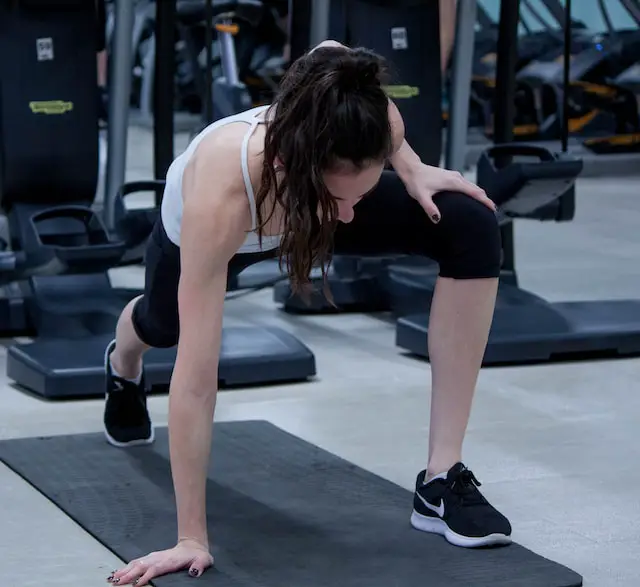Successful training programs address weaknesses head on. They are sometimes uncomfortable for the person being trained, but the potential gains are worth the investment.
Make a List of Exercises You Don’t Perform Well
Sit down and write out every weakness you can think of. It may help to write out your strengths, too. However you do it, realize that it is probably something that you’ve been neglecting.
The list is a drill so that you can come up with two or three things to work on.
I did this one someone and what came up was shoulders and squats. His shoulders came up because he had problems that he had never really addressed and he hated doing heavy weights on squats so he always wiggled his way out of those workouts.
So I designed a program that addressed shoulders and squats and sprinkled in everything else so that we weren’t neglecting anything.
Potential Gains From Training Your Weakness
The program I just described was extremely successful. There was tremendous “upside” to this program. We focused on the areas that were the weakest and got them into an average range.
It was no longer the weakest link. All sorts of improvements came in his other activities.
Past Injuries Being a Weakest Link
Most often the weakest links are old injuries that need some attention. Now, nothing that has been injured will ever be exactly the same again. But to completely ignore the area (as most people do) is the wrong way to go about it.
It is risky to start meddling with a past injury and putting stress on an area with a lot of scar tissue. You have to make sure that each little gradient is mastered before moving onto the next.
This is where 90% of people fall off. They just can’t stand in front of others and do a lateral raise with a 5 pound weight. They would be embarrassed. This is a barrier that you’re going to run into when training yourself or others.
Work Out a Program With Simple Gradients
The importance of working out the steps from a screwed up shoulder to a functioning shoulder is, literally, your value as a trainer. Where most people see either a good shoulder or a bad shoulder, you are able to see each gradient between.
When you give this to clients and help them understand, it is one of the best services you can provide. Once they understand it, then it takes hardly any supervision to get them on the right path.
Honing in on the exact amount of effort that needs to be applied, and in what direction, is what makes a trainer valuable.
My easiest clients have been ones that had a definite goal and for whom I worked out a program, with gradients, to get them to reach that goal. I would then explain it to them in detail. Once they got it, my job was as easy as “See you tomorrow.” They just came in and I assisted and supervised them.
Working Solely on Your Weaknesses
For those more difficult clients (and this may apply to yourself), you may have trouble just focusing on the weaknesses. This is because the person never feels like they’ve won.
I usually like to end every workout with a “win.” Whether it is pointing out something that the person did that they’ve never done before, mastering a new move or just getting them to a point where they feel better than they walked in the door.
When you’re training your weaknesses, things don’t always end up this way. There are just unexpected things that come up. Not always quite the endorphin high that you expect as you’re leaving the gym.
So I’ve found that sprinkling in other exercises helps overcome these minor losses and discouragements. I mainly have to consider this with clients who don’t have an above-average drive to get to their goals.
Measurable Progress
For my shoulder guy, I had a detailed list of problems that existed at the beginning of the program. I listed them out: Lateral raise causes pain at about 45 degrees off the body. Reaching across towards the other side causes pain at the AC joint. Max overhead press without pain ___ pounds.
At the end of the program, we tested each of those. No pain. His max overhead press tripled. The guy was ecstatic.
Getting people through barriers that they thought were impenetrable will produce the most smiles. You’ve literally opened up a whole new world for them.
So measure before and after. Write down everything. I was super detailed with this guy just because I knew I would need measurable results to show progress. I surprised myself when I saw that every complaint was fixed.
The more you write at the beginning, the more you can mark off at the end. Truly satisfying.
Examples of Training Your Weakness
Here are some examples of how I have gotten people through some stuck areas.
The knee guy: This guy had a problem with every exercise that involved the knee. He only wanted to do upper body. He was a bit of a difficult person to work with, but I took it as a learning opportunity. While resting in between sets, we were talking about his knee and I asked him if he could touch his toes.
I had missed it before, but now it was very evident: This guy had zero hamstring flexibility.
So I started him in on daily stretches in between his upper body exercises and made some progress. I started out super small with the leg curl machine (because he didn’t want to do it in the first place) and we got him building a bit of strength.
After two weeks of this, I told him that I wanted to assess his knees and get the exact locations that he’s feeling pain. He squatted, he lunged, he jumped. He was astonished – no pain!
The back guy: There was a man in his 50s who had back pain and was mainly into machines and didn’t want to do anything that engaged his back. It makes sense, he didn’t want to hurt it. He had been at a desk for decades and I knew that his hip flexors were probably solid as a rock and had shortened over time.
Every trainer worth his salt knows that tight hip flexors contribute to lower back pain. So again, without my client knowing about it, I made it my goal to hit his weaknesses. I started by stretching out his quadriceps as often as I could, since it also addresses the hip flexors. He would even make fun of me for doing the same thing over and over.
I put him face down on the ground and assisted him with a stretch to where his heel was touching his butt. He had gained about 20 degrees of motion in the knee over a month or two. We hadn’t spoken about his back.
I caught him when he was in a cheerful mood and said, “Now, you’ve made progress on all sorts of exercises and I would like to do a simple little assessment of your back to see where we are at.” He looked at me with excitement and told me how he was telling his wife that his back pain has pretty much gone away and he rolled into this huge success story.
I showed him some articles on the subject of hip flexors and back pain, exactly what I was applying to him, and why, and he was beyond thankful. Working your weaknesses doesn’t always have to be frustrating and sometimes I can sneak it past my clients.
Conclusion
The most satisfied personal training clients you’ll have are the ones who you helped like that. They’ve given up on specific things, ignored them and focused on their strengths instead. Getting people to put their attention back on their problems and showing them how to work through them will produce rave results. Their success alone will bring you all the business in the world.
Whether or not to focus on your weakness isn’t even a question for me. I work it into everyone’s routine that I possibly can, whether they know it or not.
My own most satisfying gains have come when I pushed myself through my weaknesses. I’ve had help from other trainers as well. Sometimes it is hard to train yourself.


